17 Blooming Bushes That Attract Butterflies
Updated: Apr. 03, 2023
Attract more beautiful pollinators with these flowering bushes that attract butterflies. You'll also get easy-care vibrant color to fill your garden!
Looking for easy ways to add lots of color to your yard, no matter how much space you have to fill? Bushes that attract butterflies are the answer! Plant just a few bushes to fill in empty corners, or plant a full hedge for a beautiful border. Of course, the lovely blooms aren’t enjoyed by humans alone. Pollinators love them, too!
Most of these bushes that attract butterflies provide nectar from their fragrant flowers, but a few also serve as host plants for caterpillars, so don’t be surprised if you wind up with some chewed-up leaves here and there. The trade-off is worth it, as your garden will be full of fluttering wings all summer long.
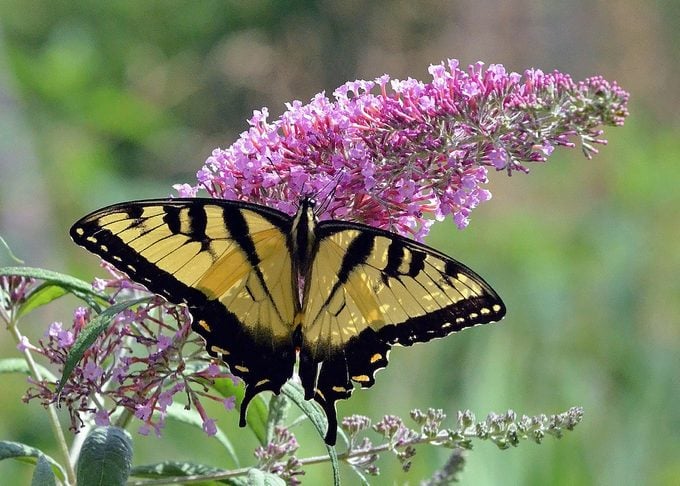
Buddleia (Butterfly Bush)
Buddleia davidii
Zones 5 to 9
This flowering bush is so synonymous with butterflies, it’s commonly just called “Butterfly Bush.” Also spelled “buddleja” (pronounce it “BUD-lee-ah” either way), this bush produces spires of sweet-scented tiny flowers that seem to draw butterflies like a magnet. In zones 5-6, buddleia dies to the ground in winter, returning the the following spring. Give it full sun, and regularly trim the dead blooms to encourage new ones.
IMPORTANT NOTE: In some areas, buddleia is considered highly invasive. Check with your local county extension office to learn if this is a wise choice for your garden.
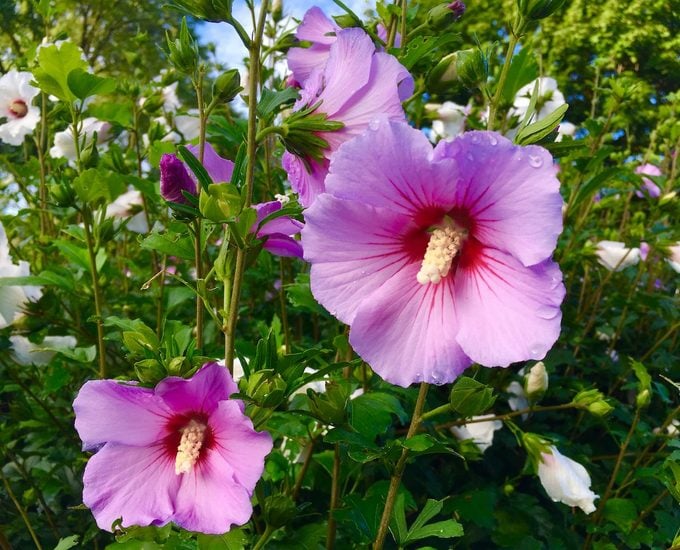
Rose of Sharon
Hibiscus syriacus
Zones 5 to 8
The big show-stopping blooms of Rose of Sharon are enough on their own to make this flowering bush that attracts butterflies a must-have for many gardeners. Hummingbirds love it too! Rose of Sharon can be grown as a bush or trimmed to form a tree shape. Give it lots of sun and moist, well-drained soil. In warmer areas, Rose of Sharon is replaced by Tropical Hibiscus (Hibiscus rosa-sinensis), which enjoys the same growing conditions.
These bushes add color to your yard in early spring.
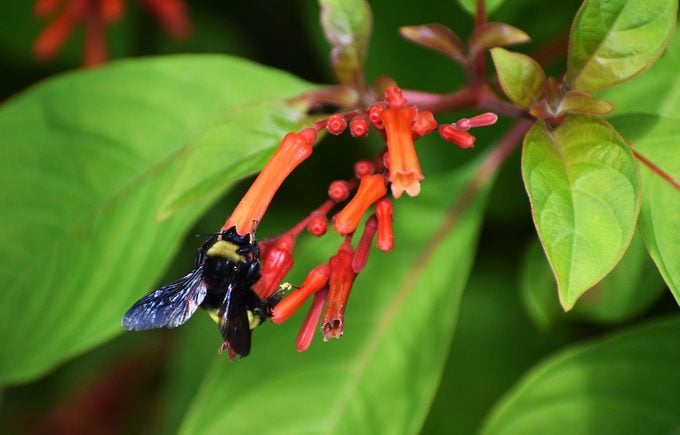
Firebush
Hamelia patens
Zones 8 to 10, grow as an annual in colder zones
Native to Florida and south, this tropical flowering shrub can also be grown as an annual in colder zones due to its amazingly fast growth habit. Given the right conditions, this plant reaches a height of 5 – 8 feet in just weeks, and is constantly covered in small tubular orange-red flowers that butterflies love. Give it well-drained soil, but provide regular moisture for best growth and flowering. In the Deep South, firebush will be killed to the ground in freezing temps, but returns once the soil warms and rains begin. P.S. This shrub is great for attracting hummingbirds, too.
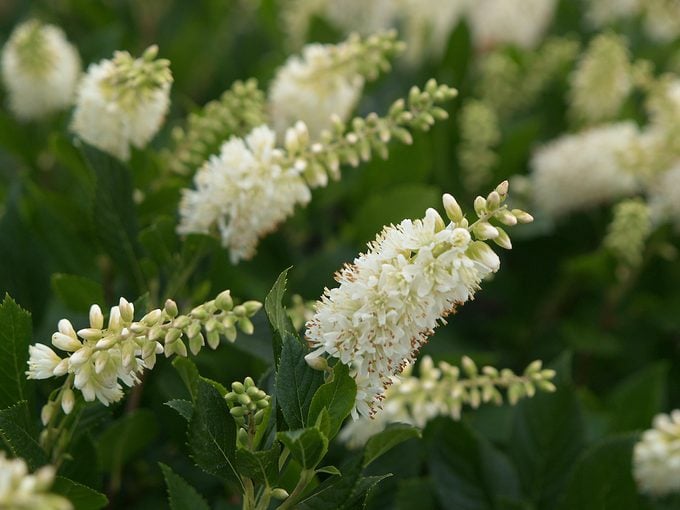
Summersweet
Clethra alnifola
Zones 3 to 9
If you’ve got a spot in your yard that stays consistently moist, plant summersweet! This flowering shrub needs lots of moisture to thrive. It grows in any light condition, although part shade is best. The long flower spikes, called panicles, are covered with sweet white blooms in late summer, even if grown in shade. Summersweet is native to eastern North America, making it an excellent choice for native butterfly gardens in those areas. These easy-to-grow bushes that attract butterflies will add color to your shade garden.
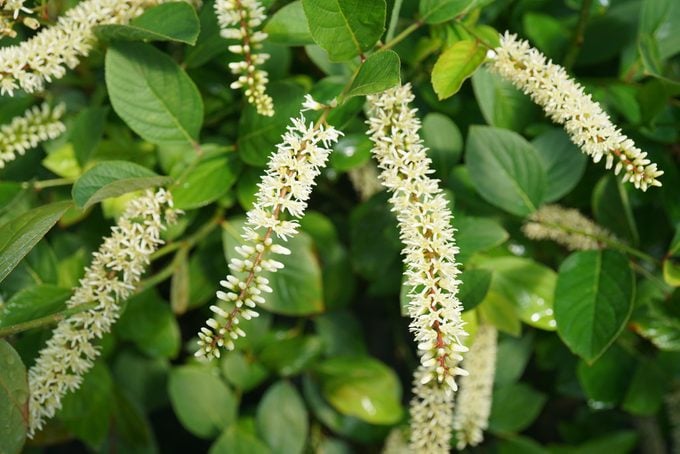
Virginia Sweetspire
Itea virginica
Zones 5 to 9
Another North American native that loves wet soil, Virginia sweetspire boasts drooping spires of tiny white flowers that open from base to tip over days or weeks. For best flowering, give it full sun for at least part of the day (mornings are ideal). The flower spires are at their peak in May and June, excellent for early butterflies. Sweetspire is best grown in massed plantings, as they tend to look a little weedy when grown singly.
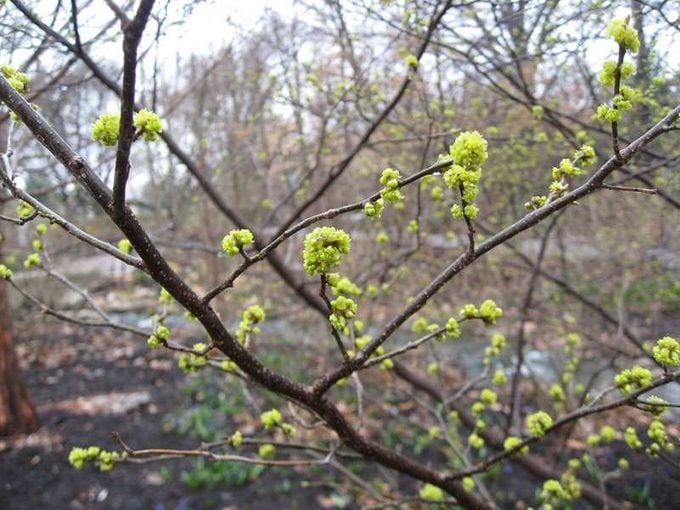
Spicebush
Lindera benzoin
Zones 5 to 9
Spicebush flowers in very early spring, with small sweet-scented blooms of greenish-yellow. Some early butterflies may visit these flowers, but the real draw comes later, when the leaves appear. This shrub is the host plant for the spectacular spicebush swallowtail, a large black butterfly with iridescent blue patches on its lower wings. Their larvae eat the leaves, rolling them around their bodies for protection. Grow spicebush in well-drained soil in full sun to part shade.
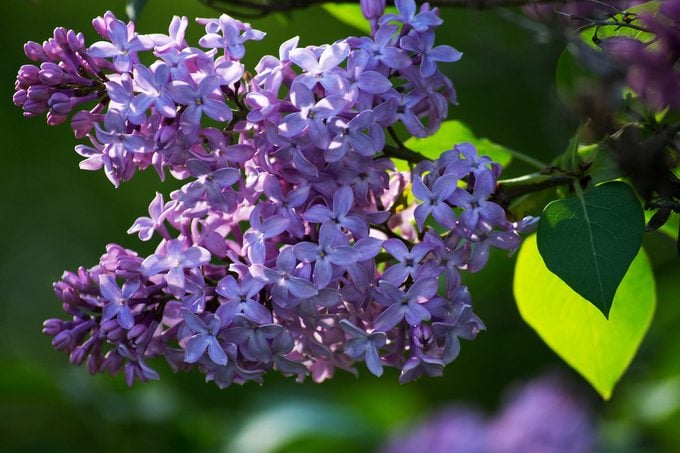
French Lilac
Syringa vulgaris
Zones 3 to 7
This beloved spring-flowering shrub has an intoxicating scent that’s instantly recognizable. Give it lots of sun and plenty of moisture, with well-drained soil and good air circulation. Lilacs start to set next year’s buds as soon as late summer, so be sure to prune only immediately after they flower so you don’t stunt the following year’s blooms. Lilac cultivars are available in white and many shades of purple and pink, all of which are attractive to butterflies and hummingbirds. Check out more purple flowers that attract hummingbirds.
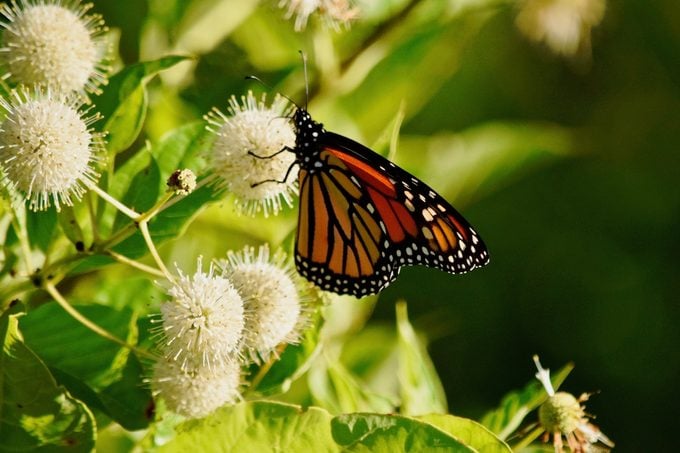
Buttonbush
Cephelanthus occidentalis
Zones 5 to 9
Buttonbush is a wetlands native of eastern North America, and it draws butterflies of all sizes when it blooms in summer. This flowering shrub needs wet feet, so plant it in moist areas, including along the edges of ponds and streams. The blooms are about the size of a ping pong ball, covered in minuscule white flower clusters. Woodlands butterflies like tiger swallowtails are especially drawn to buttonbush.
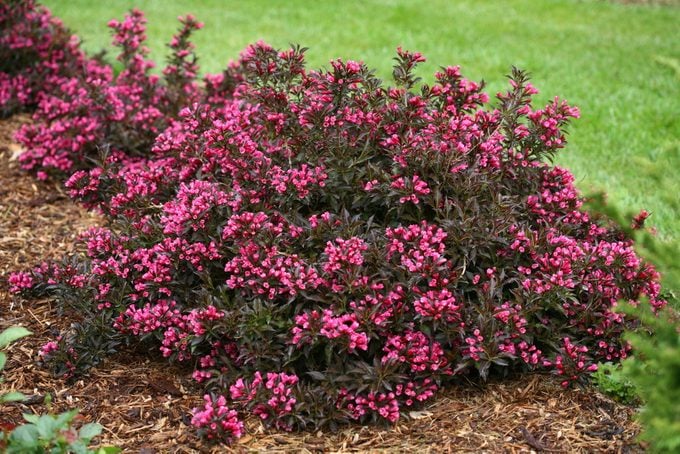
Weigela
Weigela florida
Zones 4 to 8
Despite the species name, weigela (say “why-GEE-luh”) is actually from Asia. This large flowering shrub flowers in early summer, with small tubular pink and white flowers. It flowers best in full sun, though it can take some light shade. After a heavy bloom in early summer, sparse flowering may also take place later in the season. Both hummingbirds and butterflies are known to feed on weigela blooms.
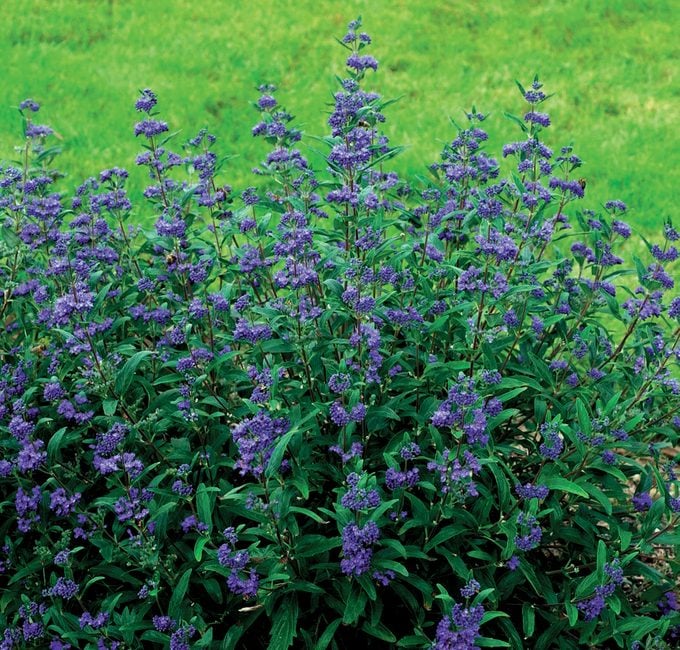
Bluebeard
Caryopteris x clandonensis
Zones 5 to 9
Another native of Asia, bluebeard is a low-growing shrub ideal for borders and even containers. It’s likely to freeze to the ground in the winter, returning the following spring to eventually grow 1 1/2 to 2 feet high. The blue flower clusters appear in late summer through fall, attracting late season butterflies in droves. Give it well-drained soil and lots of sun.
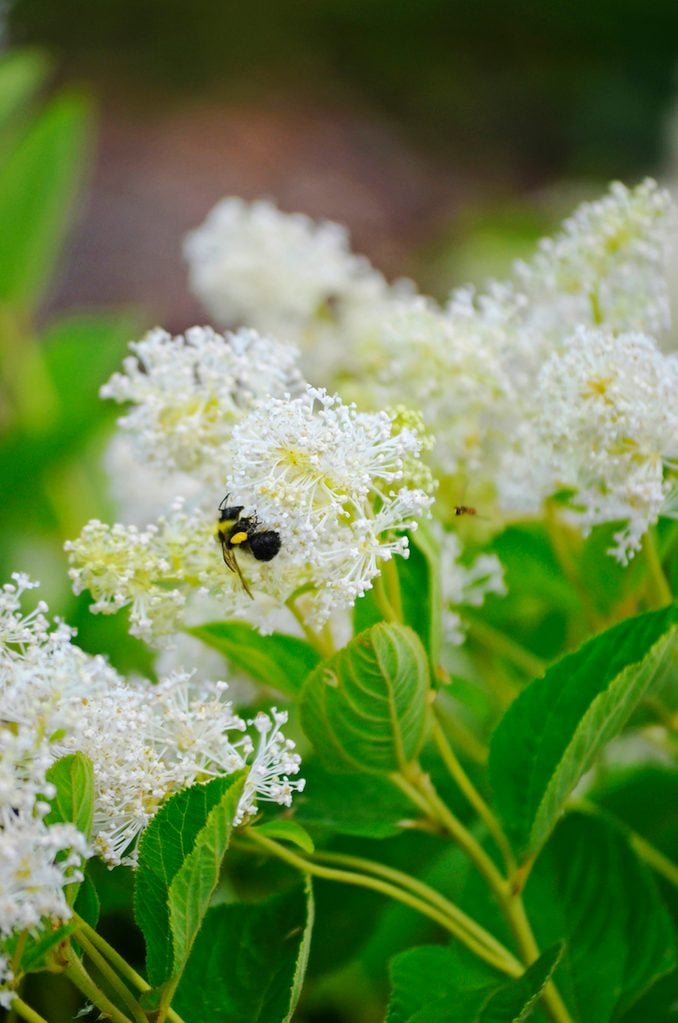
New Jersey Tea
Ceanothus americanus
Zones 4 to 8
As the name suggests, New Jersey Tea is native to eastern North America, where it was sometimes used as a tea substitute during Revolutionary War years (although it doesn’t contain caffeine). New Jersey tea throws deep roots, making it drought-tolerant but hard to transplant. Give this low-growing summer-bloomer well-drained soil in full sun to part shade.
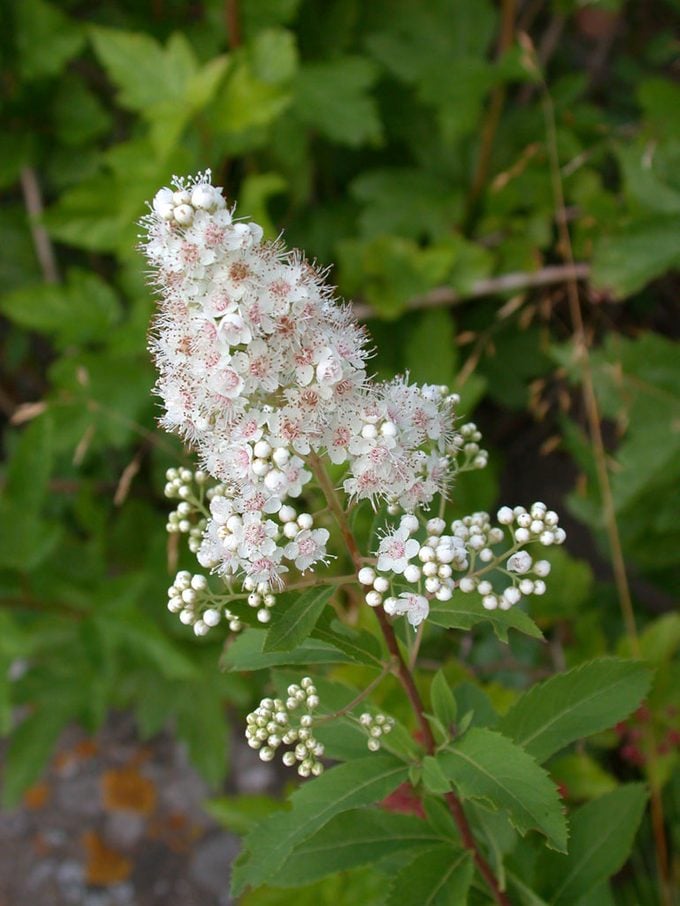
Meadowsweet
Spiraea alba
Zones 3 to 7
These native bushes that attract butterflies are just as lovely as their name. Spiraea alba should not be confused with Filipendula ulmaria, a non-native plant with the same common name. Native meadowsweet likes wet soil in full sun, where it rewards you with large cone-shaped clusters of white flowers all summer. Like buddleia, it benefits from regular dead-heading to remove spent flowers. In addition to providing nectar flowers, meadowsweet is a host plant for spring azure butterflies.
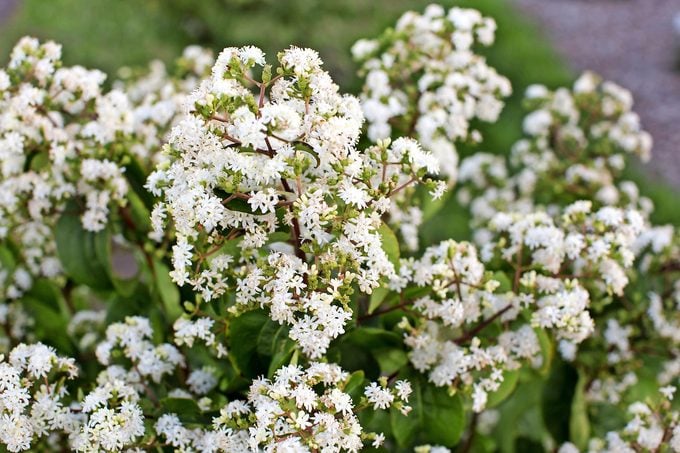 Tianshan Seven-Son Flower
Tianshan Seven-Son Flower
Heptacodium miconioidies ‘Minhep’
Zones 5 to 8
Size: 8 to 12 feet tall and 5 to 7 feet wide
Providing year-round appeal, this is a smaller, more compact version of the flowering bush Heptacodium. The bark is quite beautiful, but the real show happens when the white flowers bloom in late summer in clusters of seven, hence the seven in the name.
Why we love it: Rose-purple sepals appear after the white flowers. Check out our favorite plants with white flowers.
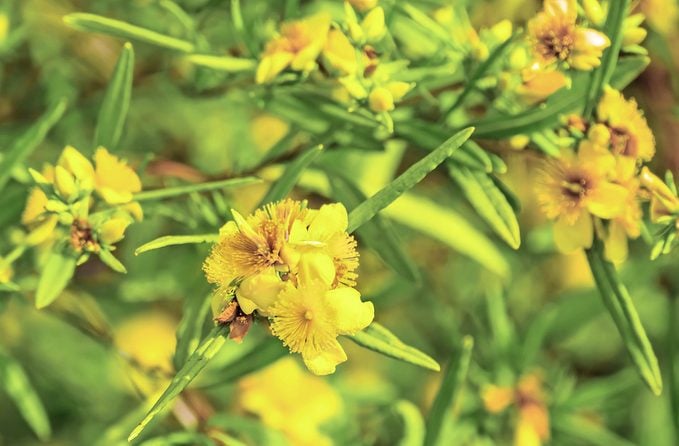 Kalm St. John’s Wort
Kalm St. John’s Wort
Hypericum kalmianum
Zones 4 to 7
Size: 2 to 3 feet tall and wide
This shrub’s blue-green foliage is the perfect backdrop for its bright yellow flowers. You’ll enjoy the buzz of visiting bees and, for those in more mild climates, the evergreen foliage. For a more compact cultivar with fine foliage, try out the Gemo.
Why we love it: Not only does this adaptable plant tolerate drought conditions once it’s been established, but it also handles poor soil.
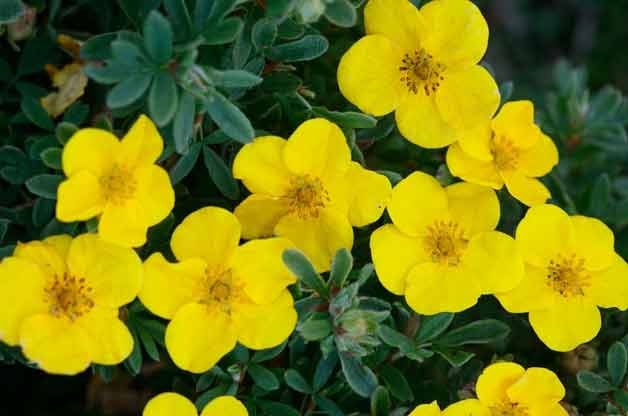
Potentilla
Dasiphora fruticosa floribunda
Zones 2 to 6
Size: 1 to 4 feet tall and 2 to 4 feet wide
The bright buttercup yellow flowers look stunning and attract local bees. To keep this traditional summer bloomer looking its best, regularly prune out a third of the old stems.
Why we love it: Though it prefers to be in full sun with well-draining soil, these hardy bushes that attract butterflies can withstand both poor, dry soils and extreme cold.
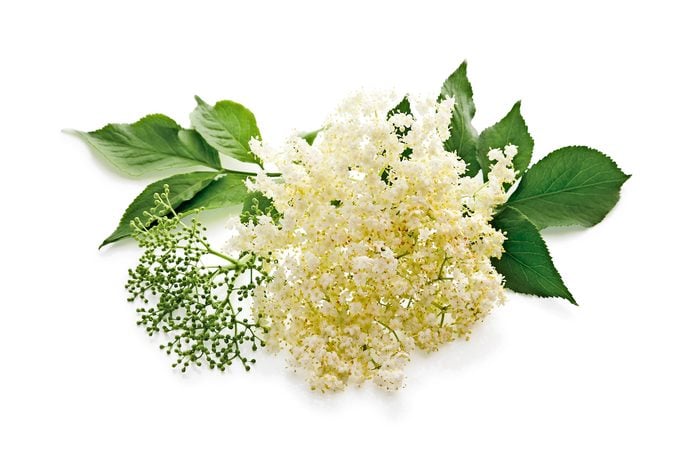 Elderberry
Elderberry
Sambucus nigra canadensis
Zones 3 to 9
Size: 5 to 12 feet tall and wide
Give these flowering bushes that attract butterflies plenty of room to spread and grow. Then watch as both bees gather on flowers and as the birds flock to the ripe fruit. Although it prefers full sun and moist soil, it tolerates drier conditions once it’s established.
Why we love it: Elderberry suckers form large and lush thickets, which are perfect hiding spots for songbirds.
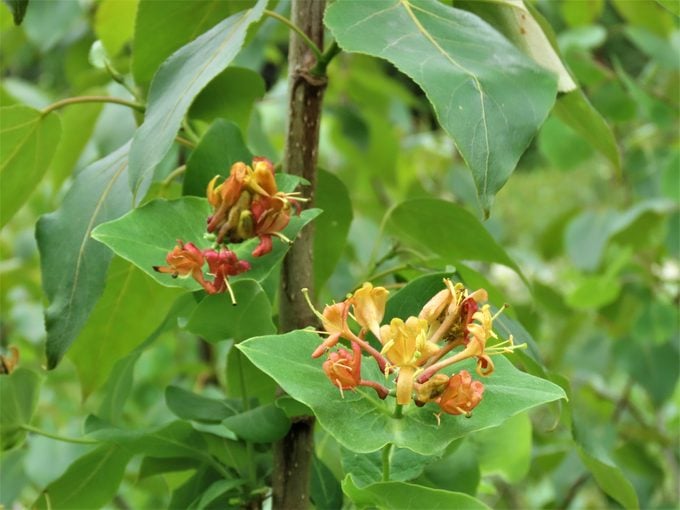 Bush Honeysuckle
Bush Honeysuckle
Diervilla spp.
Zones 4 to 7
Size: 3 to 5 feet tall and wide
This native shrub is not an invasive honeysuckle, unlike Lonicera japonica. The sulfur yellow blooms and visiting pollinators appear during the middle of summer. For a compact option, choose Cool Splash with its cream and green variegated foliage. Check out more alternatives to invasive shrubs.
Why we love it: It’s a host plant for the fawn sphinx moth, and birds eat seeds that come after the flowers.
Growing Tips for Bushes That Attract Butterflies:
- When possible, choose shrubs that are native to your area. At a minimum, be certain they are not considered locally invasive. Your local extension office can help you make these determinations.
- Leave enough space for your shrub to grow! Read the labels and understand how much room each bush will need to thrive. Most can be easily pruned to fit your space, but if the species is too vigorous a grower, you’ll be pruning all season long.
- For a unique look, try tree-forming your shrubs by choosing one main trunk and trimming the others as it grows.
- Remember that some flowering shrubs set their buds long in advance, so prune carefully. Your best bet is to prune immediately after the bloom season ends.

